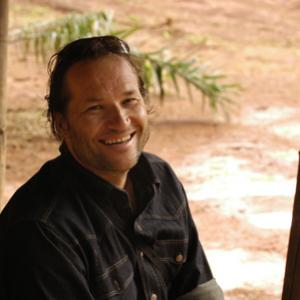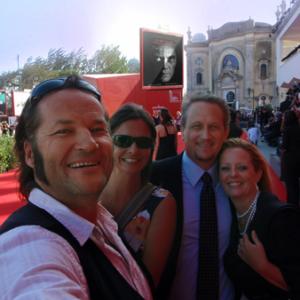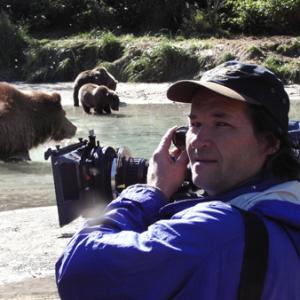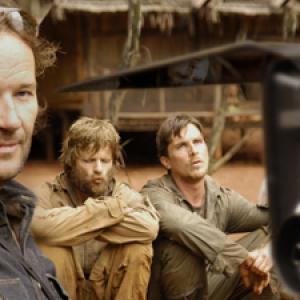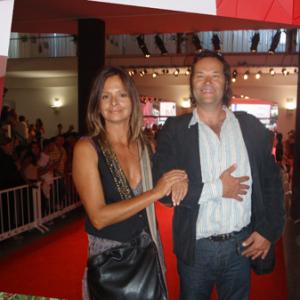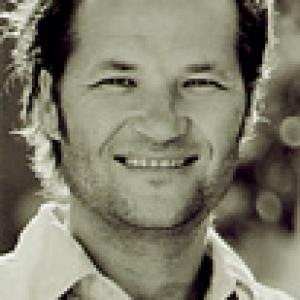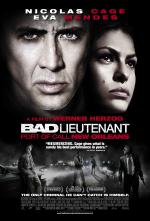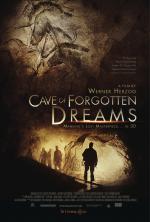| # | Quote |
|---|
| 1 | [on creating authenticity through long takes in both fiction and documentary] Tierische Liebe (1996) and Mit Verlust ist zu rechnen (1992) are extreme examples of a documentary cinema that tries to reach authenticity through completely directed and stylized scenes. The authenticity is then created through the absence of editing.[translated, 2012] |
| 2 | [on why he prefers the long take] A cut always means something, an action is finished, another action begins, and when they are connected through montage, then a certain meaning is created. But it is possible to have both actions in a continuous shot, too, and then it becomes much more intense and truthful. For me every cut is a lie and a betrayal of the audience. I believe that an unedited sequence shot is much more intense for an audience. With editing you can always combine the best moments, but you trick the audience. If a long sequence works, then it's much more powerful - but it's harder to achieve.[translated, 2012] |
| 3 | [on creating a magical reality in fiction] The crowd scene of the marketplace in Queen of the Desert (2015) might be a good example. Firstly, the space: the scene was shot on location, in a historical place in Morocco partially-reconstructed by production designer Ulrich Bergfelder. Secondly, the extras and the objects in the space: Werner hired real craftsmen and had them perform the tasks they normally do in real life. Thus, in the bazaar depicted in "Queen of the Desert", there are no extras hammering a stone completely meaninglessly in the background, just to create any movement in the frame: when you see a man with a hammer, you can be sure that he is really creating something in that particular moment - a piece of jewelry, a pan, horseshoes, anything. Similarly, the smoke you see in the air does not come from a smoke-machine, as it does in most films. Real meat was put on burning charcoal, and its smell filled the air. After everything was arranged with the location and the extras, as the last moment, Werner introduced the main actors in the bazaar and had them interfere with the environment. You see, he always provokes things: he brings obstacles, so that the actors are faced with something they do not like. Method actors - especially American actors - love to take the obstacles into their characters, while other actors simply stop acting when they feel disturbed: "I can't walk here because there is this chair," and things like that. So, in front of me there was the magical reality of the bazaar, a scenery that is constructed but nevertheless contains real life.[2015] |
| 4 | As you can see in Cave of Forgotten Dreams (2010), Werner usually works with his hardcore crew made of very few people doing everything: we are multifunctional, so whenever something needs to be done, we do it ourselves. We really like to work in such a chaotic and anarchic way. It is good for Werner's projects.[2015] |
| 5 | As a director, Werner tries to provoke a natural randomness, because he is looking for all the little details and mistakes that can create the feeling of a bigger world. It is the same for me: for instance, if it's in the right moment, even an ugly lens flare can be incorporated in the flow of the film, to give you the feeling that you are looking into a real world instead of into something perfectly clean, sterilized, glossy. I would say that controlled randomness is the key: that's why sometimes I call my work "surfing on incidents."[2015] |
| 6 | I like it when there is a flow between the movements of the actors, the movement of the camera, and the dialogue exchanges: it is almost like a ballet.[2015] |
| 7 | [shooting Queen of the Desert (2015)] The shoot was divided into three distinct phases, so my working day wasn't always the same. In the first phase, we did all these marvelous shots in the desert, with the wind and the snow. It was a very "documentary style" kind of shoot. We didn't have the main actors on board yet: we only had the supporting actors, and Silvia, my wife, was riding the camel as a stunt double for Mrs. Kidman. There also were some days in which we hanged around doing nothing, just sorting out and preparing the equipment. During one of these "quiet days," a sandstorm came out of the blue, and Werner of course said: "Come on, let's go out and shoot!" So we grabbed the equipment and filmed for a few hours in the sandstorm. After that, we spent a lot of hours cleaning the sand from the lenses, the cameras and all the equipment. In the second phase, we had all the main actors on board, and this was quite a "regular" kind of shoot on location. Contrary to the first phase, we had a detailed daily schedule listing the scenes to shoot in the desert. However, as it always happens when there is a schedule, Werner kept changing things at the very last moment, in order to somehow disturb the actors and the crew. You see, when you are shooting every day, it becomes a routine, even if you are immersed into the most wonderful, unique natural landscape. So Werner was modifying the schedule over and over to keep us on our toes. It was a constant reminder: we were not on holidays, everybody had to be always alert and get new ideas. The third phase was the most "professional" part of the shooting. We were working in England, with a huge English crew, and we found ourselves confronted with this very strict department system in which every person does just one small part of the job.(...) The film editor Joe Bini was also with us: during the day, while we were out shooting, he was assembling the scenes from the previous day, so in the evening, or in the morning of the next day at the latest, we could see a first edit. What digital technology allows us to do nowadays is great: we get a quick feedback, and we save time and money.[2015] |
| 8 | In both documentary and fiction films, I see the world as it is and the mechanics behind it, but I have to condense reality into images, into scenes. I have to transform reality into events on the screen, because "life as it is" is just very, very boring: there's no tension, there's no rhythm, there are too many empty moments.[2015] |
| 9 | [on his collaboration with director Werner Herzog] I have been introduced to Werner in the early nineties by my friend Ulrich Seidl, an Austrian director with whom I worked on Mit Verlust ist zu rechnen (1992), The Last Real Men (1994), Bilder einer Ausstellung (1996) and Tierische Liebe (1996). Werner is a director who thinks in terms of an inner vision. What he does is setting the general mood, the atmosphere of the film: he creates a scenery by bringing together human beings, animals and whatever else he needs for the story into a space of his choice. He doesn't give "directions" in the traditional sense. He does not tell actors and extras how to create their characters. He simply talks about the things that move him, what is interesting to him and why he is doing the movie, so that a deeper understanding is spread around the set. As far as my job is concerned, Werner and I do not talk much. Actually, he does not talk to me about the film at all. [Laughter] He just tells me: "Read the script, and then you will know what we will do". This is because, as a matter of principle, he never discusses aesthetics and how a film should look. These things are so boring for him, he really hates them. So, when we are shooting, he never tells me "Do a close-up, do a long shot, frame this or that, move the camera here and there." He gives me the freedom to navigate through the scenery he created and capture what I think is important. This freedom is a little frightening but, ultimately, it is what I like most. It is what keeps me interested in working with Werner after all these years.(...)He is always the co-producer of his films, so every big decision goes through his head as well. That said, I decide 90% of framing and camera movement. Werner intervenes only when he gets the feeling that I am doing something too "artistic." If he sees too much sophistication in the shot, he destroys it: not only he hates to talk about aesthetics, he also hates aesthetics in films, so whatever "formal elegance" you might see in his movies has been sneaked in against his will, or it just somehow happened in front of the camera.(...)You must understand that any framing will always be too small for Werner. He simply does not think in "little images." For instance, he is not a director who can imagine a montage like "I see this face, then I see this foot, then I see this hand, then I see the sky." He does not want to break a scene into pieces, single shots that will be later assembled in the editing room to create the impression of a space-time continuum. In his mind, he sees the bigger picture, the scene as a whole: that is why he doesn't like to cut. However, the imago, "the image of the whole," can never be fully achieved in cinema. So my job is to "cut out" a portion of the scenery Werner created in order to present the substance of his vision on the screen. I would say that our work as filmmakers has a lot to do with poetry: you see, in German the word "poetry" [dichtung] comes from the verb "dichten," which means "to compress." There is some truth in etymology, sometimes. [2015] |
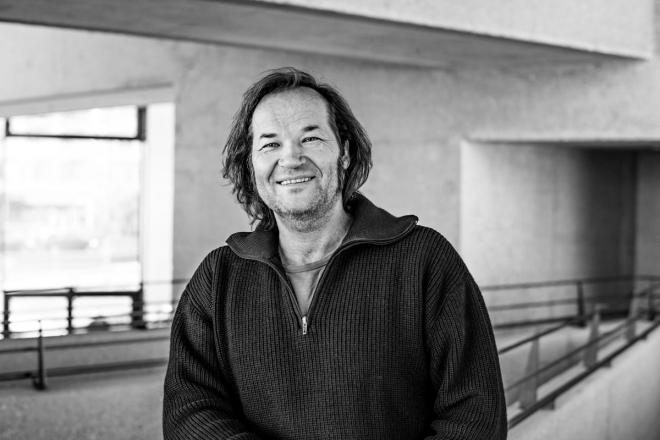
 $17 Million
$17 Million